CATEGORÍA: ADOLESCENTES
Categorías
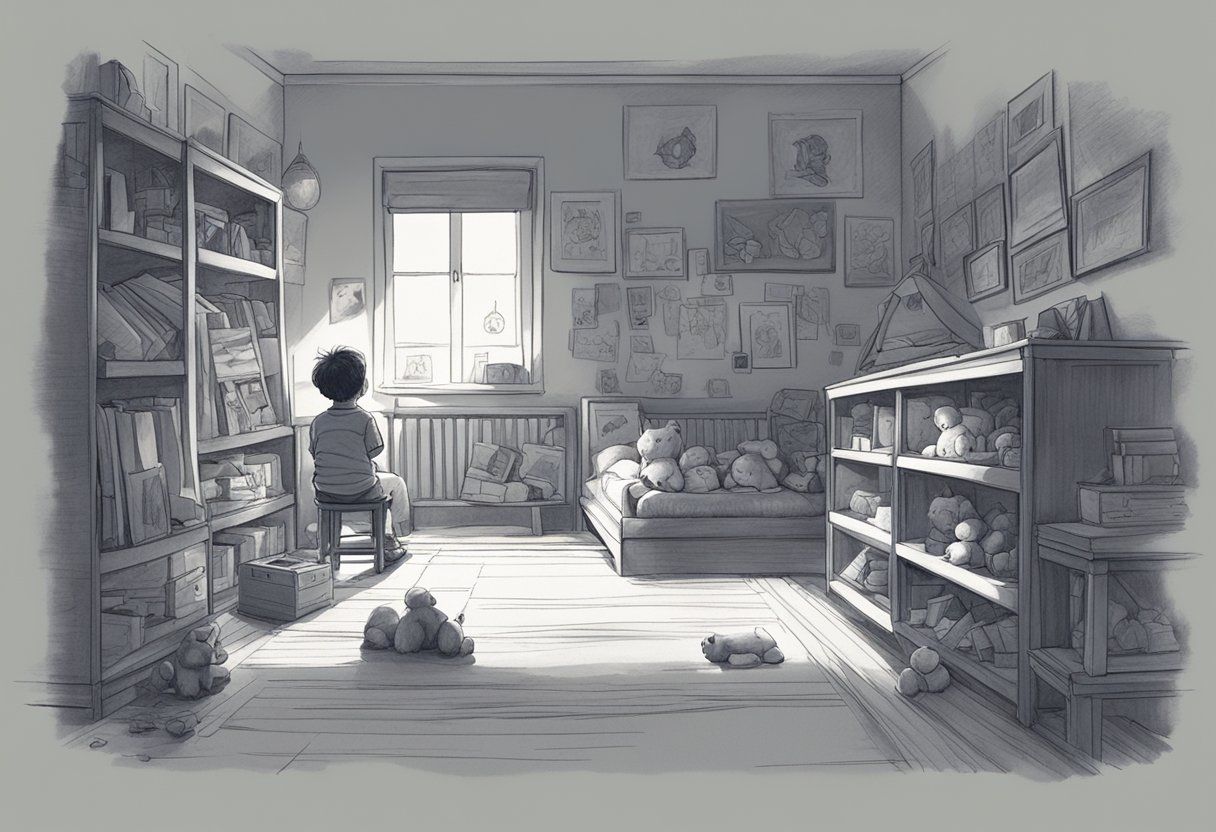
Understanding Trauma and Attachment in Adopted Children Adopted children may face unique challenges stemming from trauma and attachment issues. Understanding the nuances of these can aid in providing appropriate support and care. Here's a look into the differences and impacts these can have on a child's development. Defining Trauma and Its Impact on Children Trauma in adopted children often arises from early adverse experiences. These might include neglect, abuse, or separation from biological family. Such experiences can lead to both emotional and behavioral issues. Children who have faced trauma may exhibit symptoms like anxiety, depression, or fearfulness. Early childhood trauma can interfere with brain development, leading to potential developmental delays. Recognizing signs of trauma is crucial for creating supportive environments that foster healing and resilience. Exploring Attachment Theory and Patterns Attachment theory revolves around how children form connections with caregivers. Adopted children may struggle with developing secure attachments due to past disruptions in caregiver relationships. Attachment patterns can range from secure to disorganized. Reactive Attachment Disorder (RAD) is one potential issue, where children might find it difficult to form healthy emotional attachments. Understanding these patterns helps caregivers promote stronger bonds and emotional stability. Differentiating Between Trauma and Attachment Issues While both trauma and attachment issues can affect adopted children's development, they have distinct origins and manifestations. Attachment disorders primarily stem from early caregiver relationships, while trauma often involves broader adverse experiences. Attachment issues might lead to problems with trust and emotional connections. Trauma can create broader emotional and behavioral challenges. By correctly identifying these issues, you can tailor interventions that specifically address the root causes, aiding in the child's overall well-being. Clinical Presentation and Diagnosis

Understanding Trauma Through the Lens of Stress When we talk about trauma—especially in children who come through adoption, foster care, or early caregiving disruptions—we’ve got to shift how we see it. Trauma isn’t just about war zones, abuse, or catastrophic loss. Trauma, for a child, is any experience that is prolonged, overwhelming, or unpredictable. Let that sink in. It’s not about the event itself. It’s about how the nervous system receives it. If a child doesn't have a safe adult to help them express and process the experience, that stress becomes locked in. And locked-in stress is toxic stress—it wires the brain for survival, not connection. The Brain on Survival and the Promise of Resilience When trauma hits, it hijacks the nervous system. The child drops into fight, flight, or freeze. You’ll see it as tantrums, shutdowns, inattention, or defiance. But here’s what’s important: the brain is neuroplastic. Healing is always possible. Resilience is not about being tough—it’s about having someone safe to lean on. Someone who will stay calm in the storm. Someone who will sit in the hard moments and not run, not fix, not control. That’s what rewires the brain for love. That’s how we create healing. Trauma and the Emotional World of the Child Children who carry trauma often walk through the world in a state of fear. That fear can show up as rage. It can show up as silence. It can show up as clinging or shutting down. Not because the child is bad—but because they are trying to survive. Their behaviors are their strategies. In relationships, trust becomes fragile. Their brains are on high alert. But this is where love-based parenting becomes transformational. Parenting Beyond Behavior—Creating Safety First When we stop trying to fix behavior and start focusing on creating emotional safety, everything begins to shift. This is not about control. This is not about consequences. This is about connection. This is about saying, “I see you. You’re safe. I’m here. I’m not leaving.” Over and over again. It’s about regulating ourselves first, because the most powerful tool in the healing of a child is a regulated adult. Love is not soft. Love is fierce. Love says, “You can fall apart, and I will still be here.” And from that place, children begin to heal. They begin to trust. They begin to grow. Fostering a Supportive Parent-Child Relationship

The Impact of Early Trauma on Brain Development Let’s slow down and really sit with this for a moment—early trauma rewires a child’s brain. It doesn’t ask for permission. It just moves in, uninvited, and begins to shift the way a child sees the world, feels about themselves, and responds to the smallest of stressors. In the world of adoption, we cannot afford to minimize this. Emotional regulation, memory, stress responses—all of it is impacted. These aren’t just academic concepts. This is your child’s daily life. This is the meltdown in the grocery store. The blank stare in the classroom. The refusal to connect at bedtime. What Is Childhood Trauma? Trauma isn’t just “big bad things.” Trauma is any experience that is overwhelming, unpredictable, or prolonged—and the child’s ability to make sense of it is missing. Abuse, neglect, the loss of a caregiver? Yes, absolutely. But it can also be things we may overlook. A move. A failed placement. A loud argument. And here’s the key: when those moments aren’t expressed, when they’re not processed with someone safe, they don’t fade away—they get embedded. They become part of the child’s wiring. That’s why we don’t wait for a diagnosis. If you’re seeing anxiety, school issues, big behaviors—that might be your clue. Trauma is already in the room. Trauma and the Developing Brain The child’s brain is still under construction. When trauma hits early, it doesn’t just “affect” development—it reshapes it. What should be a beautiful, flexible, adaptive system becomes hyper-vigilant, easily triggered, and emotionally flooded. Think about this: your child’s brain starts prioritizing survival instead of learning, connection, and exploration. You see this show up in difficulty with social interaction, in academic struggles, in moments where it feels like your child is unreachable. And this is not a phase. This wiring can follow them into adulthood if we don’t intervene. The Amygdala and Hippocampus: Trauma’s Main Targets Two major players in this story are the amygdala and the hippocampus. The amygdala is the smoke detector—it sounds the alarm. The hippocampus is the storyteller—it helps make sense of the past. In children who’ve experienced trauma, that smoke detector is stuck in the “on” position. Constant alerts. Constant fear. Even in safe environments. The hippocampus? It gets quiet. It shrinks back. Memory formation becomes cloudy, fractured, hard to trust. It’s not just about memory and fear—it’s about their ability to learn, to engage, to trust. The Stress Response System: The HPA Axis And then there’s the HPA axis. This is the system that manages stress—like your body's thermostat. Trauma breaks the dial. Cortisol and other stress hormones stay elevated. The body stays ready for a battle that never ends. And over time, this takes a toll. We see atrophy in parts of the brain—especially the hippocampus. We see emotional outbursts, attention issues, difficulty with relationships. But most importantly, we see children trying to survive a world that feels unsafe. Long-Term Effects of Adversity in Adopted Children
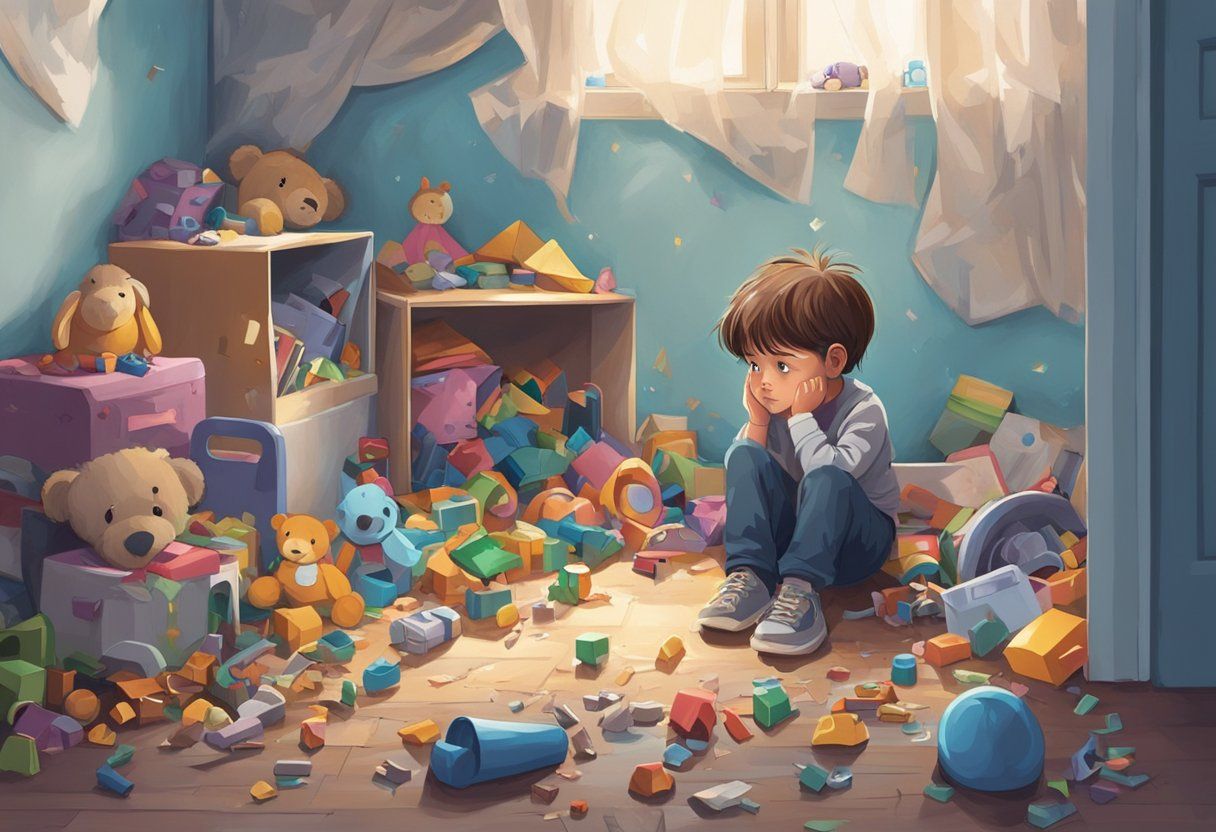
Let’s pause for a moment and remember something simple but powerful: every child has a story, and every adopted child carries that story into your home, into your heart, and into every single moment of relationship. Sometimes, the behaviors you’re seeing aren’t “problems to fix” — they’re messages. They’re the language of a nervous system shaped by fear, stress, and uncertainty. Understanding the Roots of Trauma Trauma isn’t just the big stuff. It’s not just abuse or neglect. Trauma can be any experience that’s overwhelming, unpredictable, or prolonged — especially when that experience is met without the comfort of a trusted adult to help make sense of it. For an adopted child, trauma might start with separation from the birth mother. It might show up in the form of early medical procedures, neglect in a foster placement, or even subtle disruptions that an adult might not even recognize as significant. The key isn’t what happened — it’s how the child experienced it. Unexpressed. Unprocessed. Misunderstood. These are the hallmarks of trauma that linger, long after the moment has passed. How Trauma Lives in the Body and Mind A child shaped by trauma often learns to survive through hypervigilance — always scanning for danger, never fully settling into safety. Their brain development may be impacted, making things like memory, focus, or emotional regulation difficult. You might see anxiety. You might see withdrawal. You might see anger or defiance. But beneath all of that — you are looking at a nervous system stuck in survival mode. And here’s the thing: if you only look at the behavior, you’ll miss the message. That’s why we have to go deeper. The Prevalence of Trauma in Adoption It’s not rare. It’s not unusual. In fact, trauma is a common thread in the adoption narrative — not because adoption is bad, but because adoption begins with loss. Even in the most loving, intentional families, we must hold space for this truth. Many children entering adoption or foster care have already experienced profound stress. They’ve lost not just parents, but familiarity, routine, identity, and sometimes hope. These early adversities often create symptoms that mimic PTSD — triggers, flashbacks, hypersensitivity to stress. But here’s the good news: healing happens in relationship. What Can We Do? As adoptive parents, professionals, or caregivers, we must first see the trauma — not as something broken, but as something to be understood with compassion and curiosity. The behaviors you witness are not defiance — they’re dysregulation. They’re the echoes of early fear playing out in the present moment. When we shift from reacting to behaviors to responding with love and regulation, we stop trying to “fix” the child, and instead begin to heal with them. We become the safe haven they never had. We become the voice that says: “You’re safe now. I see you. I’m not going anywhere.” But we don’t walk this road alone — and we shouldn’t. That’s where wraparound services come in. Wraparound support is not a luxury — it’s a lifeline. It’s a coordinated circle of care that surrounds both the child and the family. It’s about creating a network — a system of support that understands trauma, honors relationship, and walks with you every step of the way. That might include: Therapeutic support: trauma-informed therapy, occupational therapy, or play therapy tailored to the child’s needs. Educational advocacy: support in navigating IEPs or classroom behavior challenges with professionals who understand how trauma impacts learning. Parent coaching and training: ongoing guidance to help you regulate yourself, deepen attachment, and implement loving interventions that work. Crisis response: when things fall apart (because sometimes they do), having trained professionals who can respond without judgment, offering stabilization and care. Peer support: connection with other adoptive families who get it, because they’re living it too. Wraparound services ensure that no parent is parenting in isolation, and no child is left without the village they need to heal. Because healing happens in relationship — and not just the relationship between parent and child, but in the larger web of safety and support we create around them. Seeing Through the Eyes of the Heart: Recognizing the Signs of Trauma in Adopted Children

When we’re raising children who’ve experienced early life adversity—be it adoption, foster care, or any kind of trauma—we’re not just navigating behaviors. We’re navigating a story. A nervous system. A heart in need of safety and connection. And that’s where wraparound services step in—not as another clinical checklist, but as a whole-person, whole-family, love-first model. What Are Wraparound Services, Really? Wraparound isn’t therapy in the traditional sense. It’s not “drop your child off for an hour” and hope for transformation. Wraparound is a relationship . It’s a team—a village, really—built around the child and family, walking together through the daily trenches. It honors that every child’s history matters. It recognizes that healing happens in context—in homes, schools, churches, communities—not just offices. This approach is collaborative, flexible, and deeply respectful of each family's unique culture, values, and challenges. It’s not about changing the child. It’s about understanding the child and aligning a support system around that understanding. The Heart of Wraparound: Love, Strengths, and Shared Vision At the core of wraparound services is a radical idea: that healing grows from connection and safety. And you can’t create safety if you don’t feel seen and heard. Wraparound teams work with families, not over them. They listen first. They build from strengths. They co-create goals that reflect what the family wants , not just what the system thinks they need. This isn’t about compliance. It’s about empowerment. Every voice matters: the child’s, the parent’s, the teacher’s, the neighbor’s. Everyone becomes part of the support fabric. It’s a dynamic, evolving process designed to meet families where they are. The Case Manager: Not Just a Coordinator, but a Connector The case manager in a wraparound model isn’t just a scheduler or paperwork pusher. They are the relational anchor. They’re the voice on the other end of the phone when a parent feels like they can’t take another meltdown. They coordinate, yes—but more importantly, they connect. They align resources, facilitate meetings, and ensure that no one’s navigating this path alone. True case management in wraparound is built on trust and communication. It’s not just service provision—it’s relational regulation in action. Why Community is Not Just Important—It’s Essential Community is not an add-on. It’s the soil in which healing can take root. Wraparound taps into local schools, churches, rec centers, mentors, and other natural supports that already exist in a child’s world. It brings healing out of the clinic and into the playground, the living room, the lunchroom. And that’s where real change happens—because children don’t live in therapy sessions. They live in relationships. When we engage community, we’re not just offering help. We’re offering belonging. And belonging is what builds resilience. Traditional Therapy Modalities: Honoring the Foundation, While Recognizing the Limits
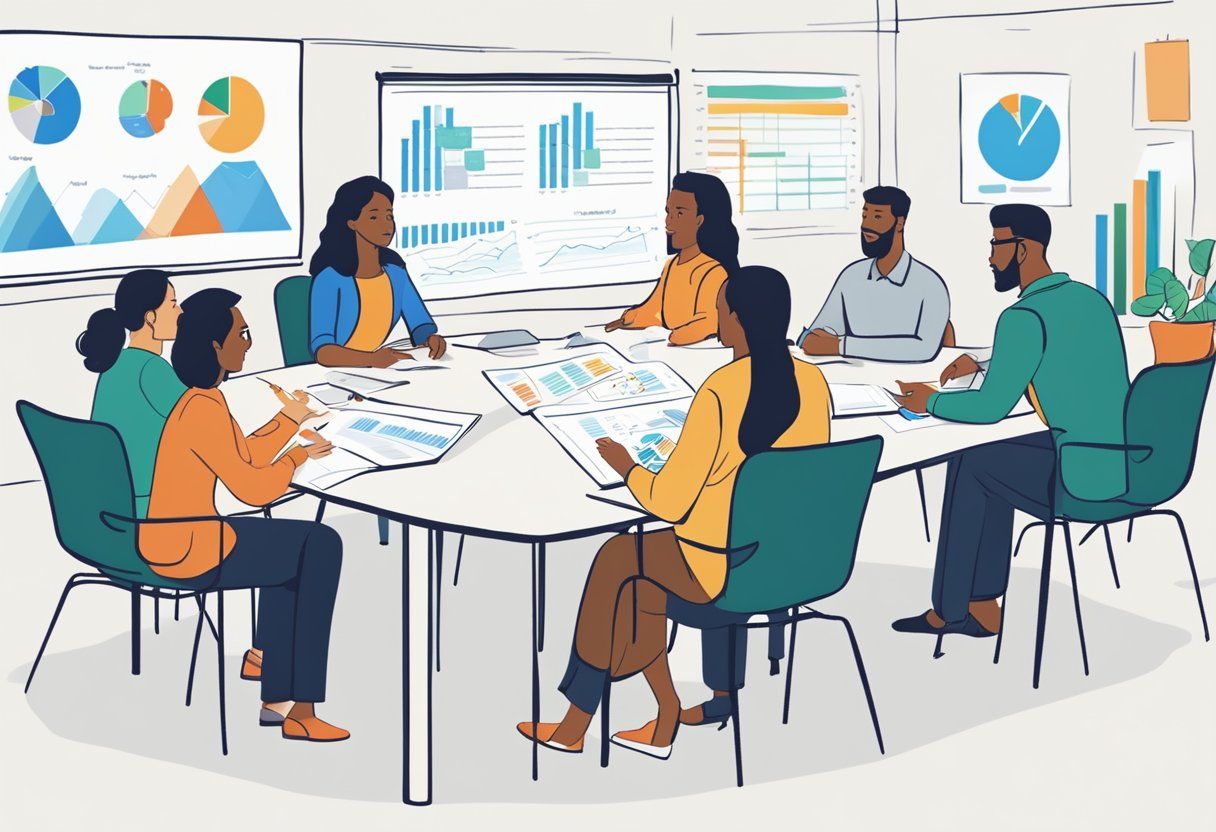
Understanding Wraparound Services Let’s get real for a second. Parenting a child with behavioral or emotional challenges isn’t just hard—it can feel like you’re constantly walking a tightrope. Now imagine trying to do that without a safety net. That’s what wraparound services are: they’re your net. They’re the support system you need when your child’s behavior has gone beyond what you can manage with love and logic alone. What Are Wraparound Services, Really? At their core, wraparound services are just that—they wrap around your family. Not just your child, not just one problem. Your whole family. This is a holistic, relationship-centered model that brings together therapists, educators, social workers, and—most importantly—you, the parent. These teams work together to help stabilize the environment and bring regulation to chaos. They’re not there to "fix" your child. They’re there to walk with you in creating healing experiences—experiences that regulate stress, increase oxytocin, and foster connection. Healing Happens in Relationships, Not Programs You’ve probably heard me say this before, but it bears repeating: behavior is not the problem. Behavior is the symptom. If we focus on behavior alone, we miss the opportunity to heal the pain that’s driving it. That’s why wraparound services must include emotional regulation support, school advocacy, and home-based coaching that recognizes the parent-child relationship as the center of healing. When these systems integrate—not just coordinate, but truly integrate—they become powerful tools for change. But it only works if the parent is at the table as an equal. The Power of Natural Supports and Community Now, don’t underestimate the power of your own people—your tribe. I’m talking about natural supports. Grandma who picks up the kids after school. The neighbor who checks in. Your church. Your circle. These relationships carry a level of trust and emotional safety that no professional service can replicate. They are the true long-haul players in this healing journey. When wraparound teams partner with these natural supports, they amplify the family’s strength rather than replace it. Yeah, It Costs. But What’s the Cost of Not Doing It? Let’s talk dollars. Sure, comprehensive wraparound care can carry a price tag. But do you know what costs more? Residential treatment. Juvenile detention. Broken families. Emotional breakdowns. And here’s the beautiful thing—there are funding options . Medicaid waivers, mental health grants, adoption subsidies, and in some cases, insurance coverage. But navigating this system is like hiking through mud. That’s why you need an advocate—someone who knows the system and believes in your family. Wraparound Isn’t a Service. It’s a Commitment. Ultimately, wraparound care isn’t about services—it’s about relationships. It’s about shifting from fear to love, from isolation to connection, from surviving to healing. It’s about creating a space where your child—and you—can finally exhale. Let’s not forget: healing happens not because of programs, but because of people. It happens because someone believed in your family enough to stand beside you, not above you. Is It Working? Assessing Wraparound Services with the Heart and the Brain in Mind
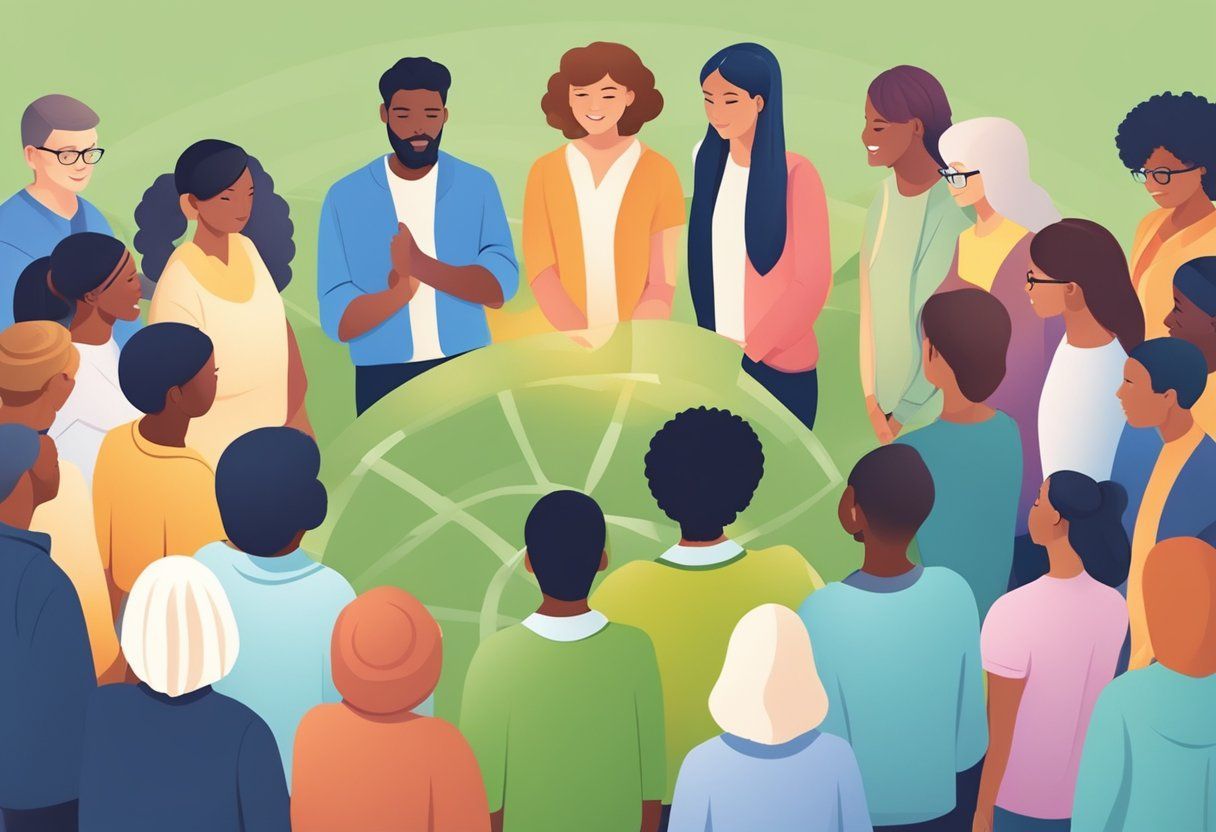
Let’s take a step back and look at something crucial—support doesn’t begin and end with a service plan or therapy session. True support, the kind that leads to healing, must meet families where they are and walk alongside them every step of the way. That’s what wraparound services offer in the adoption journey: not just a set of tools, but a relationship—an ongoing, intentional, love-based relationship. What Are Wraparound Services in Adoption? At their core, wraparound services are not about fixing problems—they’re about holding space for healing. They exist to help create a stable, nurturing environment where both the child and the family can access what they need, when they need it, in the way that makes the most sense for them. That’s not one-size-fits-all. That’s deeply personal. The heart of wraparound lies in four essential principles: Strengths-Based: We begin with what the family already has—their resilience, their commitment, their love. We amplify that. Family-Centered: This isn’t about professionals dictating outcomes. It’s about listening to the family’s voice and honoring their goals. Collaborative: Healing happens in connection. Wraparound brings together service providers and families, not as separate parts, but as a unified team. Flexible: Needs shift. Children grow. Families stretch. Services must evolve too, without rigidity. These principles form the groundwork for individualized care—support that meets emotional, educational, social, and physical needs all at once, all the while guided by the family’s rhythm. Why Wraparound Matters in Adoption Adoption is layered. It carries histories—both seen and unseen. When a child enters a new family, those layers don’t dissolve. They come with grief, trauma, loss... and yes, the potential for transformation. Wraparound services recognize that and bring in the emotional scaffolding families need. Think about it: Emotional Support looks like trauma-informed counseling that doesn’t pathologize behavior but seeks understanding and connection. Educational Assistance involves recognizing that a child’s learning journey is influenced by their nervous system, their stress, their early attachment experiences—not just by academics. Resource Connection is about more than referrals. It’s about building a community around the family—healthcare, therapy, peer support, respite—so they’re never walking alone. This is where stability is born. Not from controlling behavior, but from calming the storm inside. Not from managing symptoms, but from meeting the deeper needs. Wraparound services aren’t just a program—they’re a lifeline. They are a vessel of love in action. Weaving Together Support: How Wraparound Services Strengthen the Adoption Journey

Let’s break it down. Wraparound services aren’t just some buzzword or fancy system. They’re real people coming together, doing real work, for real families who are facing real struggles. This is about community, healing, and support—it's about not being alone in the trenches. What Wraparound Really Means At its core, wraparound is about connection. It's a team-based, family-driven way of supporting children and youth who are struggling with behavioral and emotional challenges. It's not about fixing kids—it's about understanding them and supporting the family unit. And that’s huge. Here’s how it works: Team-Based Support You’ve got a team. That means professionals, yes—but also you, your family, and sometimes community members who care. Everyone at the table, all focused on the child’s healing. Family-Led, Not System-Driven This isn’t someone telling you what to do. This is you saying, “This is what we need,” and having people who actually listen. Your values, your voice, your journey. Comprehensive, Whole-Child Focus This goes beyond just a diagnosis. It includes behavioral strategies, social work support, educational guidance—whatever is needed to address the whole child, because no one challenge happens in isolation. But Here’s the Heart of It: Communication is the Glue When it comes to wraparound, communication is what holds it all together. Regular meetings aren’t about checking boxes—they’re about making sure everyone is aligned, regulated, and working from the same place of compassion. That kind of unity brings consistency, and consistency is where healing happens. The Real Benefit? Hope and Movement You get access to resources you didn’t even know existed. Support grows with your child—it evolves, just like life does. You stop walking alone. At the end of the day, wraparound isn’t a program—it’s a mindset. It's a reminder that we don't heal in isolation. We heal in community, with support, and with love at the center. Let’s keep doing the hard, heart-filled work. Together. What Makes Wraparound Work: It’s Not Just the Pieces—It’s the Heart Behind Them
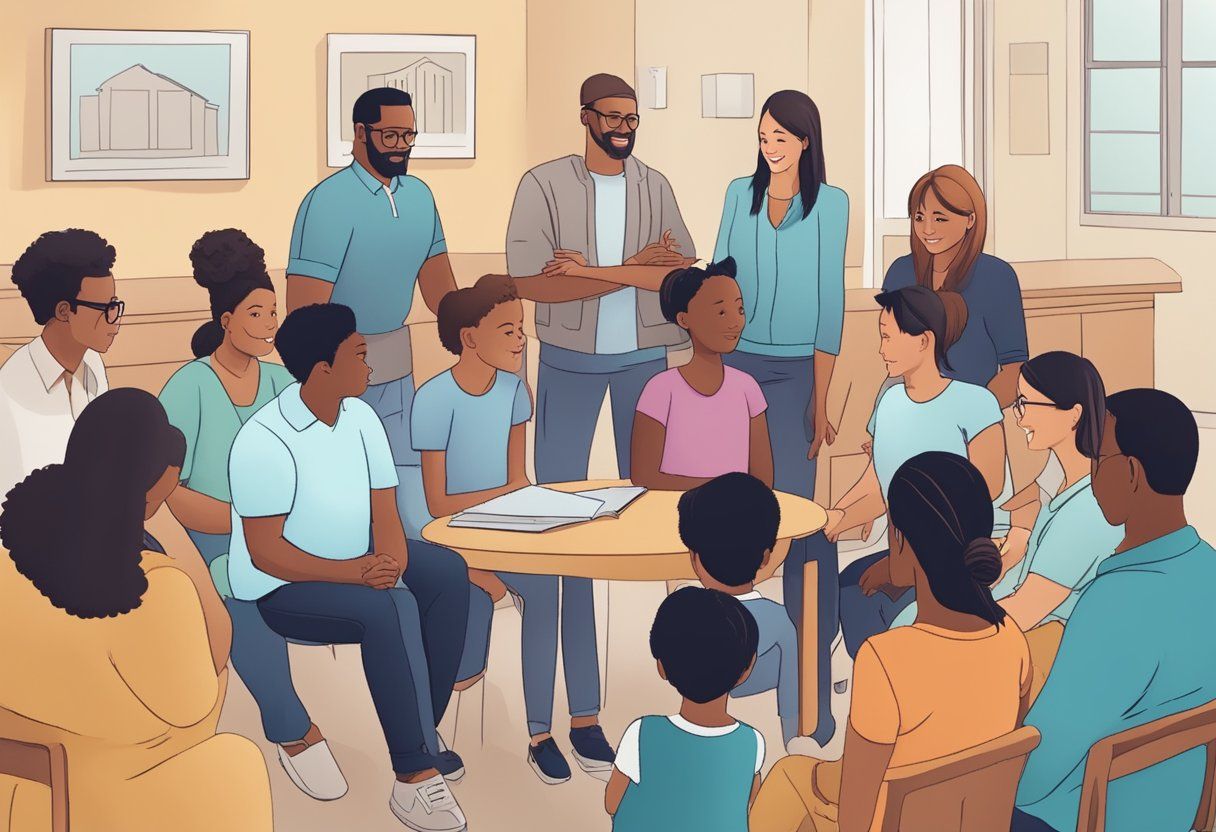
Eligibility Criteria for Wraparound Services Let’s talk about who wraparound services are really for—not just in clinical terms, but in a way that reflects the complex stories behind the behaviors and the children living them. Understanding the Real Criteria for Wraparound Support Wraparound services aren’t about checking boxes. They’re about meeting families where they are—often overwhelmed, often misunderstood, and almost always running on fumes from the everyday challenges that come with parenting a child who’s been through more than most adults can imagine. These services are designed for families navigating the stormy seas of trauma, stress, and emotional dysregulation. 1. Behavioral Health Isn’t Just a Diagnosis Yes, there are “criteria”—things like DSM diagnoses and the term serious emotional disturbance (SED) —but let’s get real for a minute. A diagnosis might get you in the door, but what these services are really looking for is a child whose behavior is a cry for help. These are children who don’t just act out—they’re acting from a place of deep-seated fear, loss, and pain. And when we talk about multiple diagnoses, what we’re really saying is: this child needs support that sees beyond the behavior to the need. Because no child was ever healed through a label. Healing comes from connection, not correction. 2. Involvement with Child Welfare Systems If your child has touched the foster care system, has a history of disrupted placements, is navigating post-adoption struggles, or is part of adoption programs that promised support but left you navigating alone—you’re not alone. Wraparound is built for exactly this kind of complexity. Too often, families are left holding the pieces after systems fail to ask the deeper questions. Wraparound services can be one of the few places where a child’s full history—and the parent’s own emotional journey—are taken seriously. 3. Systems of Care: Integration, Not Isolation This is where the magic starts to happen—when schools, juvenile justice, mental health providers, and child welfare start talking to each other. True wraparound care is coordinated care. But let’s be clear: none of that matters if the family isn’t seen as the heart of the healing. For a family to even begin to receive what wraparound offers, there has to be a willingness to engage—not to jump through hoops or follow a behavior plan to the letter, but to show up in the mess and say, “We want healing. We just don’t know how to do it alone.” Here’s the Truth: Wraparound isn’t about qualifying. It’s about understanding. It’s about recognizing that the behaviors are just the smoke—there’s always a fire beneath. And if you’re a parent reading this and you feel overwhelmed, worn down, or like no one sees what you’re carrying—you’re not alone. Wraparound services are for you. Because at the core of every eligibility guideline, there’s this one truth: families in crisis don’t need more judgment. They need more love. More support. More oxytocin moments. And that’s what wraparound, done right, is meant to deliver. Wraparound Planning Process
Nosotros queremos reducir el estres de los padres e implicar a toda la unidad familiar en el proceso de curación.





